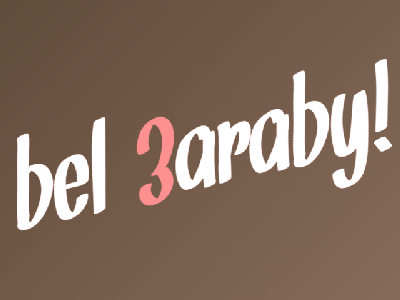The Unofficial Arabic texting language: Franco
By: Nevin Girgis / Arab America Contributing Writer

One of the most common struggles for Arab American young adults is the decline of the teaching of the written Arabic language. Many Arabs communicate verbally in Arabic, however, struggle rises in cases of online conversation. Lack of knowledge of Arabic prevents younger generations from maintaining communication in Arabic. Hence, an unofficial Arabic ‘electronic’ language is constructed as a source for online communication.
‘Franco’ is the unofficial Arabic online language, which combines numbers and English letters to make up Arabic words. The utilization of ‘Franco’ is largely on WhatApp and Facebook Messenger. One simply spells out a word or phrase the same way it would pronounced verbally in Arabic. Considering there are letters in the Arabic language that have no equivalent letter in English, numbers are used to represent the missing letters. All in all, the purpose of ‘Franco’ is to substitute numbers for Arabic letters to transcribe the sentence as accurately as possible.
Main Substitutions
أ-2
- The number 2 represents the Arabic letter ‘ء’ ,as well as, ‘ق’.
Some examples of the use of number 2 include:
- ‘2aleel’/ ‘قليل’- which translates to ‘little’.
- ‘2alam’/ ‘قلم’- which translates to ‘pencil’.
- ‘taf2il’/ ‘تفاؤل’- which translates to ‘optimism’.
- hamra2/ ‘حَمراء’- which translates to ‘red’.
ع-3
- The number 3 represents the Arabic letter ‘ع’.
Some examples of the use of number 3 include:
- ‘3einy’/ ‘عيني’- which translates to ‘my eye’.
- ‘3ala wein’/ ‘على وين’- which colloquially translates to ‘onto where’.
- ‘3a2ila’/ ‘عائلة’- which translates to ‘family’.
- ‘3abid’/ ‘عابد’- which translates to ‘worship’.
3‘ -غ
- The number 3 with the apostrophe( ‘ ) represents the Arabic letter ‘غ’.
Some examples of the use of 3’ include:
- ‘3’a2ib’/ ‘غاﺋِﺐ’- which translates to ‘absent’.
- ‘3’aaim’/ ‘غاﺋِﻢ’- which translates to ‘cloudy’.
- ‘3’aadib’/ ‘غاضب’- which translates to ‘angry’.
- ‘3’aalib’/ ‘غالب’ -which translates to ‘winner’.
خ-5
- The number 5 represents the Arabic letter ‘خ’
Some examples of the use of number 5 include:
- ‘5aif’/ ‘خاﺋِﻒ’- which translates to ‘afraid’.
- ‘5aa’in’/ ‘ خاﺋِﻦ’- which translates to ‘traitor’.
- ‘5aabara’/ خاﺑَﺮَ’- which translates to ‘to inform’.
- ‘5aadim’/ ‘خاﺩِﻡ’- which translates to ‘servant’.
ح-7
- The number 7 represents the Arabic letter ‘ح’
Some examples of the use of number 7 include:
- ‘7adith’/ ‘حادث’- which translates to ‘incident’.
- ‘7adir’/ ‘حاضر’- which translates to ‘present’.
- ‘7afiz’/ ‘حافظ’- which translates to ‘preserve’ or ‘memorize’.
- ‘7alqa’/ ‘حلقة’- which translates to ‘episode’.
A typical conversation between two Egyptian friends texting in Franco would look like this:
Waleed: Ezayek 2eh el a5bar?
Omar: Ana kewayes ya sa7by. We enta 3amel eh?
Waleed: Kolo Tamam, bes msh motafa2il 3an el 2emte7an.
Omar: La2 mat5afsh. Inshallah 5eir.
Waleed: Hahaha matesta3’rabsh low fashalt.
Omar: Ya3ni enta mesh 7afiz 2ay 7aga wala 2eh?
Waleed: La2 bisara7a.
Omar: El 7amdulallah.
Conclusion
Conclusively, ‘Franco’ does not have strict spelling or grammar rules similar to any official language, contrarily, it’s nonchalant and nothing but an online ‘texting’ language. As a result, many young adults from all over the world use it to communicate in Arabic without having to use Arabic script. This allows freedom for online communication to be in both languages, rather than just English. To a certain extent, Franco helps maintain the Arabic language for those who are not able to read and write in Arabic.
Check out Arab America’s blog here!








